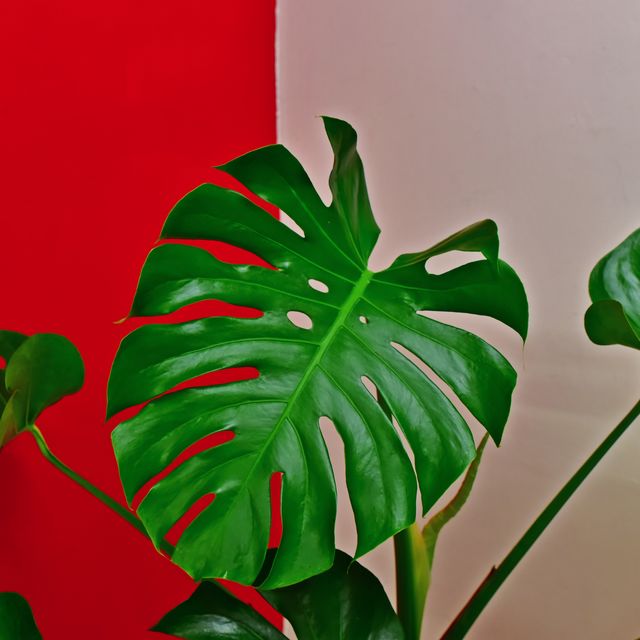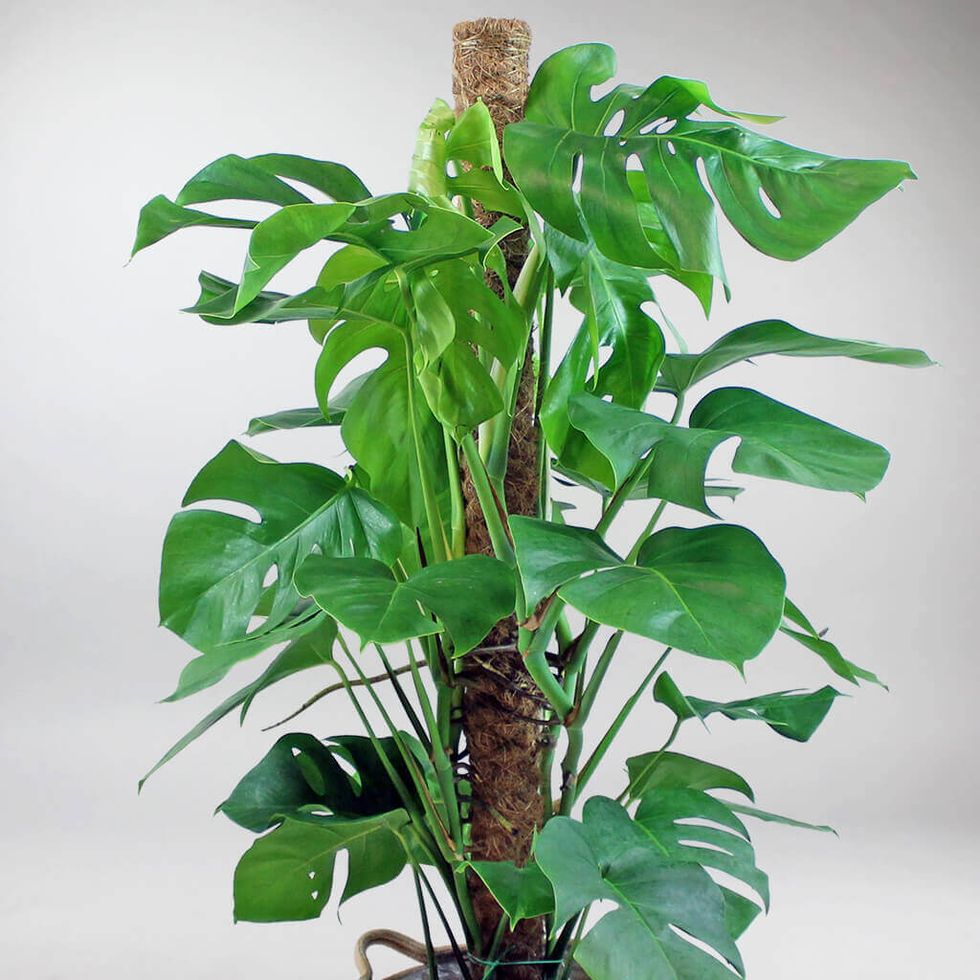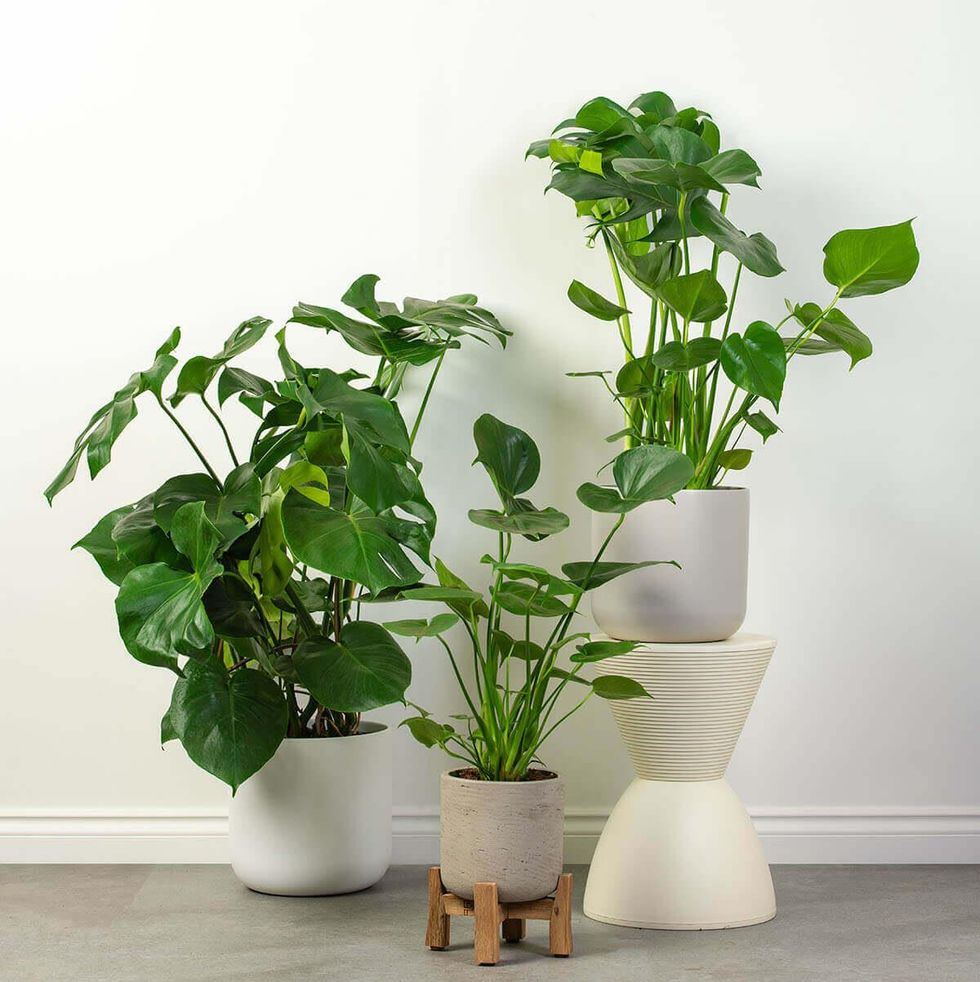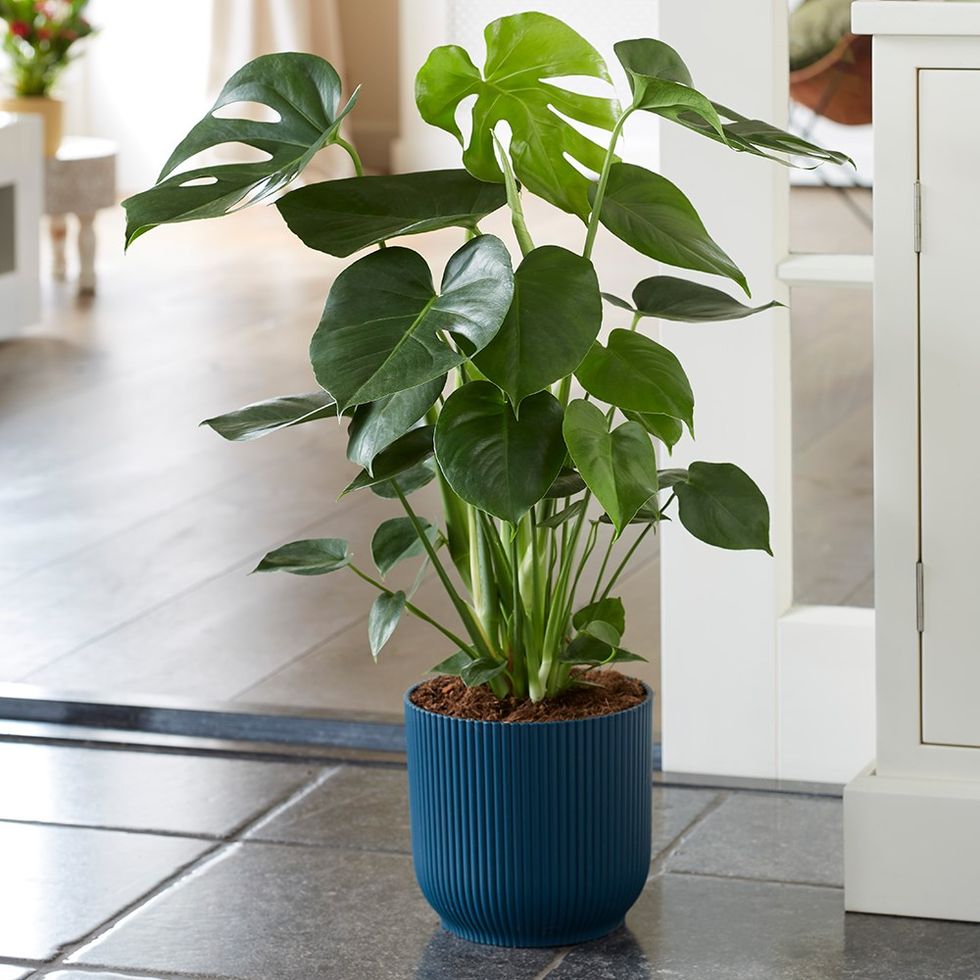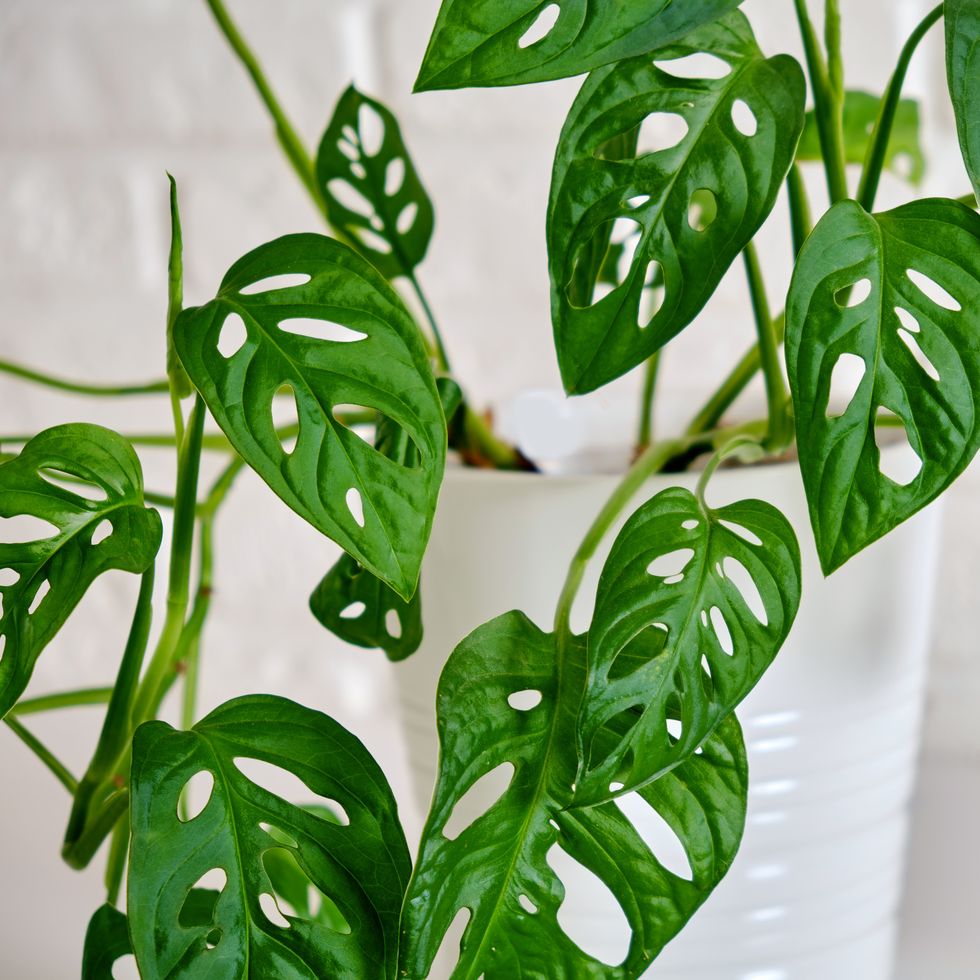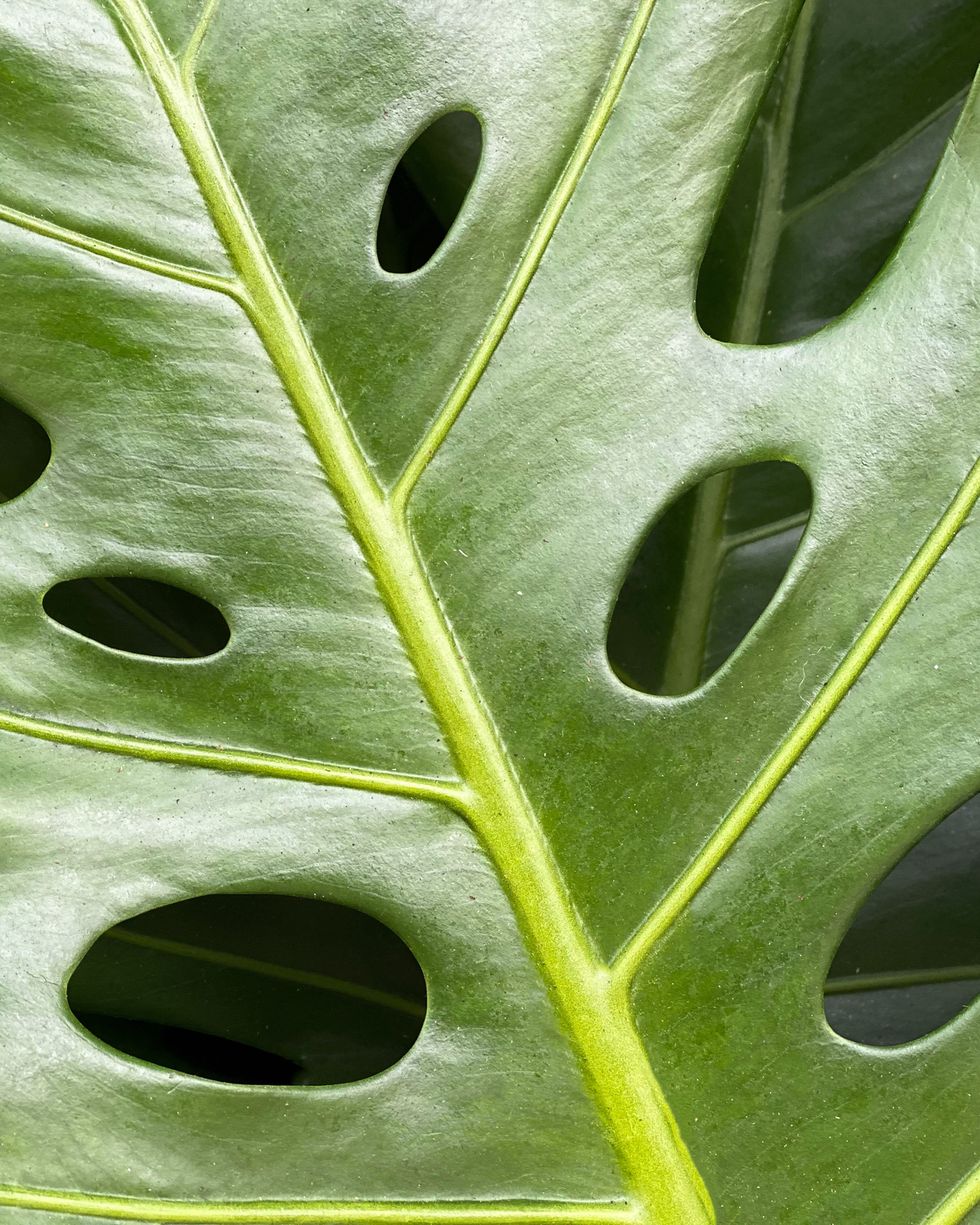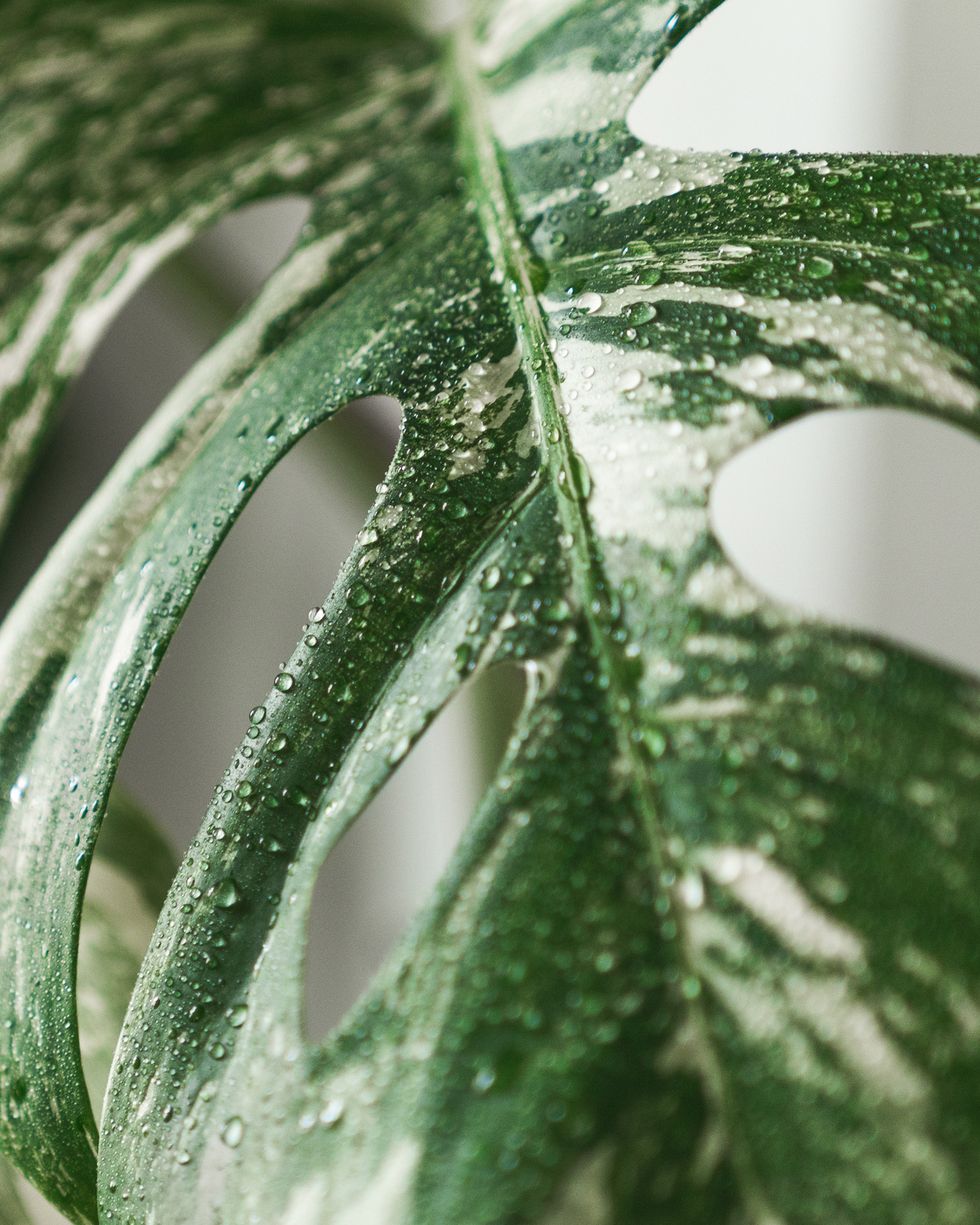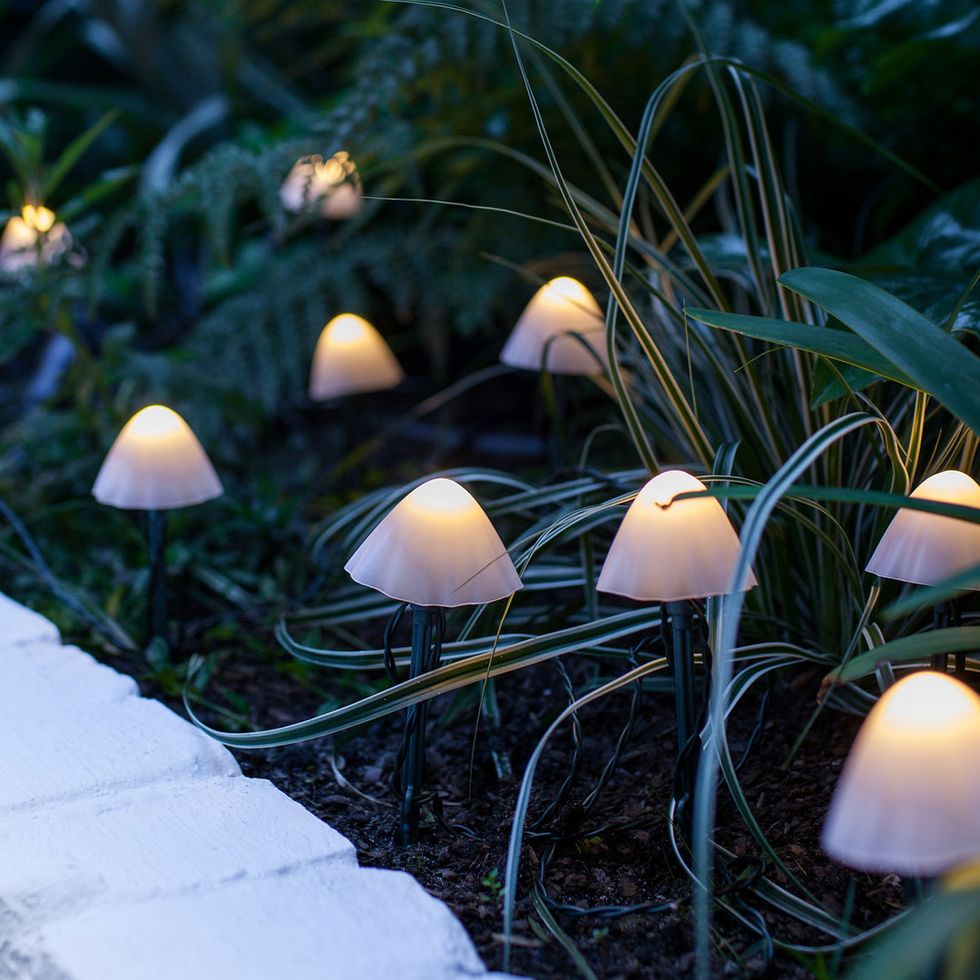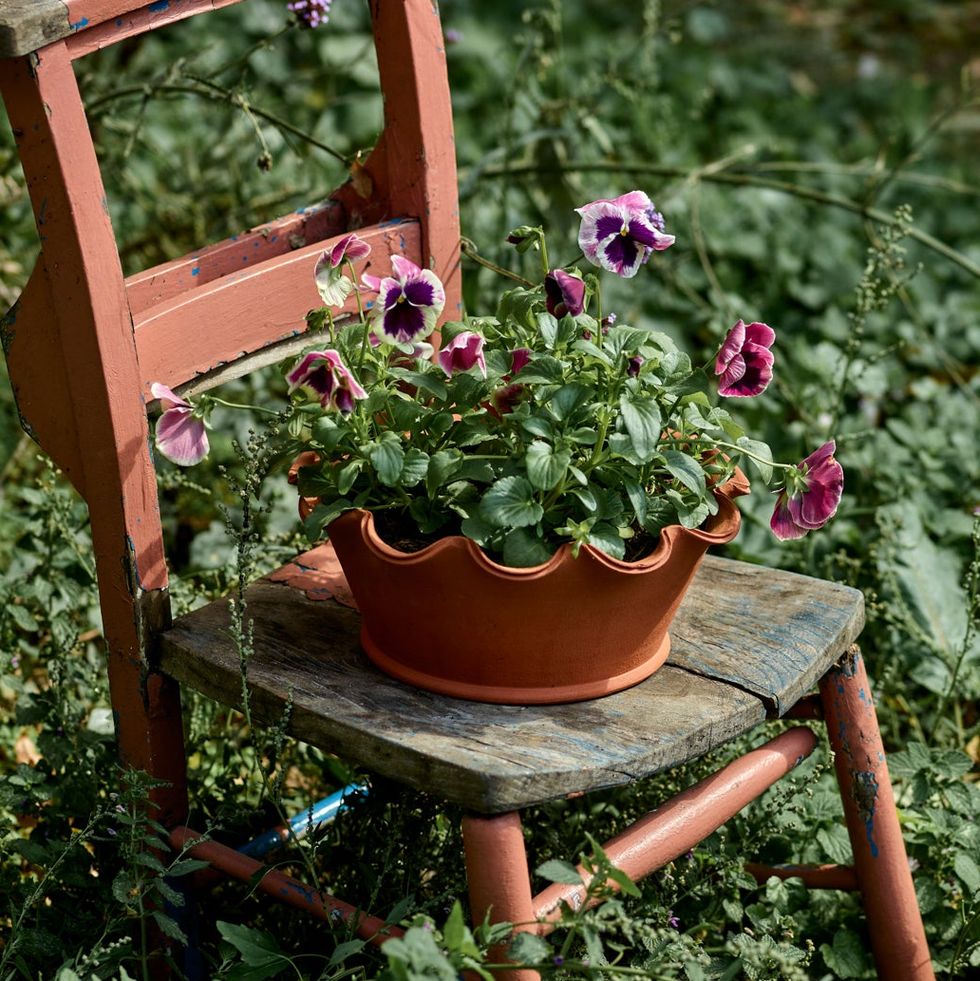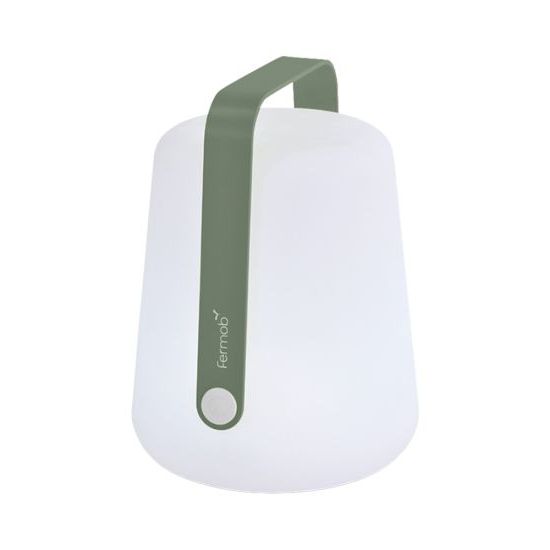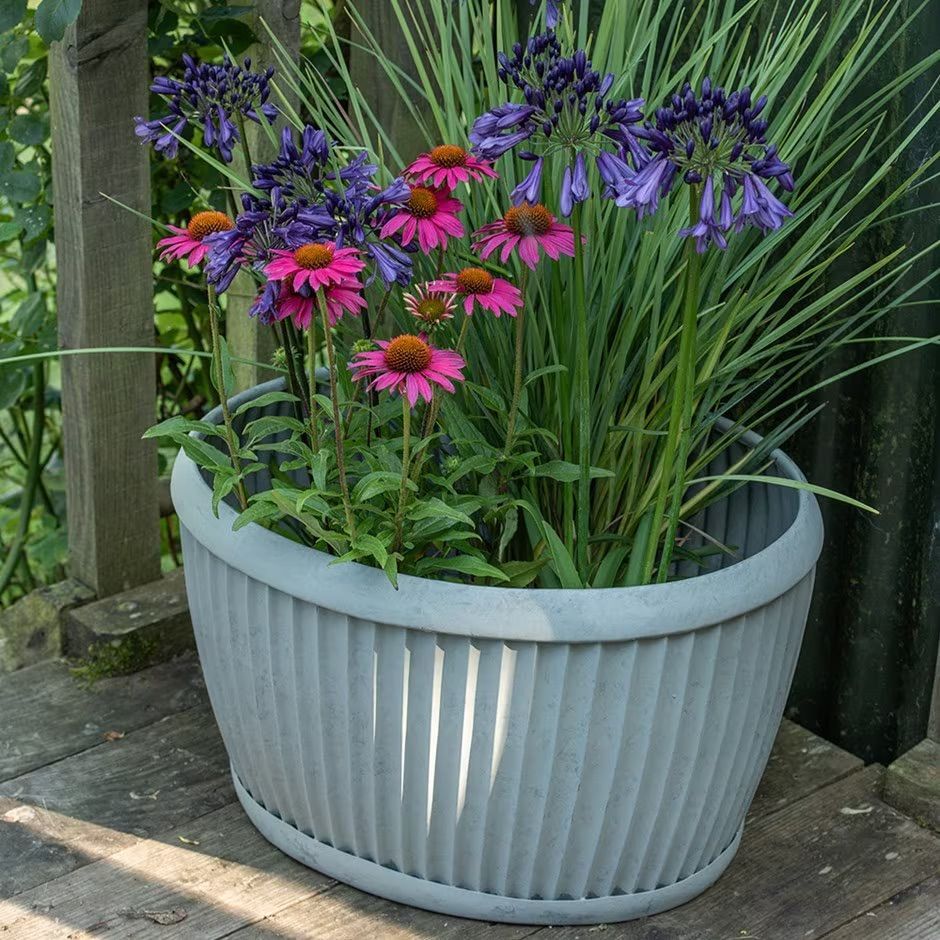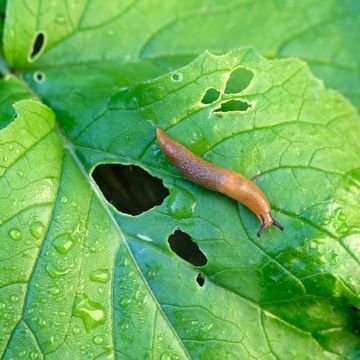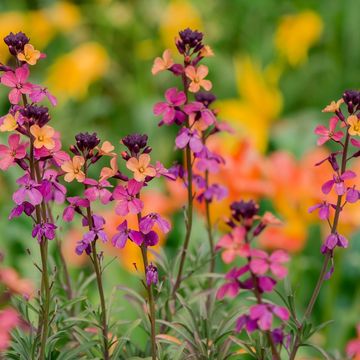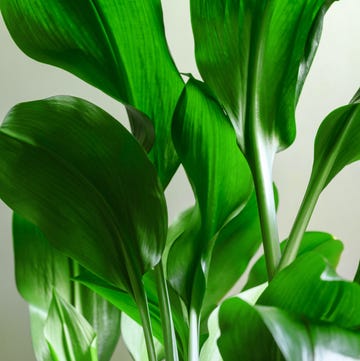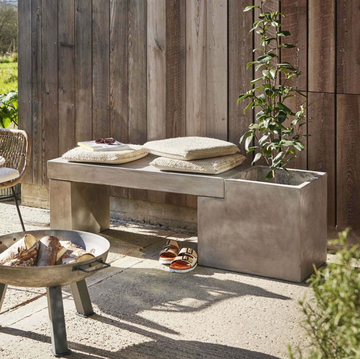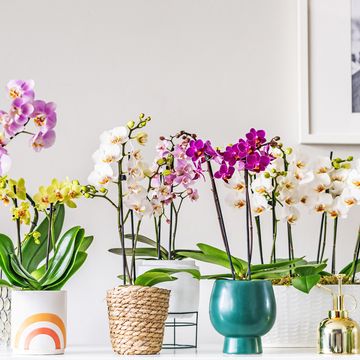With dark and glossy heart-shaped leaves, the Swiss cheese plant, known by its most common scientific name as Monstera deliciosa, is a tropical perennial native to South and Central America. As its leaves grow, they develop holes which give the plant the appearance of Swiss cheese, hence the name.
A woody vine, the Swiss cheese plant can get to an impressive size when growing outdoors, reaching more than 20m in height and with leaves over three feet wide. Indoors, it makes a striking houseplant which is exceptionally easy to care for whatever your level or experience.
What is a Swiss cheese plant?
The category (or the genus) of this plant is Monstera. Under that title there are several different species sold, all of which go by the common name of Swiss cheese plant. Popular varieties include Monstera deliciosa, the most commonly found, with its long and elegant leaves and elongated holes. Monstera adansonii has heart-shaped leaves with holes, and Monstera epipremnoides has slashes through the outer edges of its leaves instead of interior holes.
They're all gorgeous and equally easy to care for. In its natural habitat in both Central and South America, there are over 40 varieties growing wild – a whole jungle just of monsteras.
The process by which a Swiss cheese plant becomes a Swiss cheese plant is called fenestration, which means that as the plant ages, its leaves develop holes or slashes. This plant is a natural climber and does well in environments with lots of indirect sunlight. You can also plant them outdoors if you have a spot with both sunlight and partial shade. Be prepared for your Swiss cheese plant to grow fast if it's happy and healthy, with a growth rate of around one to two feet a year. For animal-loving plant owners, it's important to note that this plant can be toxic to pets.
The Swiss cheese plant at a glance:
Botanical name: Monstera deliciosa, Monstera adansonii, Monstera epipremnoides.
Other names: Swiss cheese plant, Swiss cheese vine, cheese plant, five holes plant, hurricane plant, split-leaf philodendron, Mexican breadfruit.
Height and growth rate: Tall and fast growing, with a growth rate of one to two feet a year. Outdoors, Monstera can grow to more than 20m tall.
Light: Likes a lot of bright, indirect light. A bright spot with some shade is ideal, or near a sunny window.
Watering: Prefers to be consistently moist but not soaking wet. Water the plant when the soil feels a little dry.
Temperature: This tropical plant likes warmer temperatures.
Toxicity to pets: Toxic to pets when ingested.
Plant parent level: Beginner friendly! This plant is low maintenance and hardy.
How to care for your Swiss cheese plant
Light
Keep a jungle environment at the forefront of your mind when considering how much light your Swiss cheese plant needs. Due to its tropical roots, it ideally needs as much bright, indirect light as possible. In its natural habitat, it can keep to the shade under the cover of the large trees it grows beneath, which means that the leaves can be prone to burning if placed under a lot of direct sunlight. If you don't have a suitably shady spot, the best case scenario is to give your plants a couple of hours of sun in the morning only.
Watering
Think consistent dampness for this green giant. The soil should be kept at a consistent level of moistness, but shouldn't be dripping wet. The best way to tell when you should water this plant is to dip your finger a little way into the soil. If it feels almost dry, it's time to bring out your watering can. Water until some of the liquid runs out of the pot's drainage holes, then stop.
Temperature and humidity
Humidity is very important for a Swiss cheese plant. In the jungle, the environment of a monstera is very humid and warm, and that's what you should mimic in your home. Keep it in a cosy spot free from drafts. A well-lit bathroom can be an ideal place thanks to the high humidity levels present in bathrooms. If the humidity in your house isn't high enough, try misting the plant with water or using a humidifier.
Fertiliser
If you've recently repotted your Swiss cheese plant, you can wait four to six months before fertilising it, as compost and potting mix tends to have slow-release fertiliser in it. If not, however, this plant benefits from being fertilised monthly with a general liquid fertiliser diluted by half.
Common problems with a Swiss cheese plant (and how to fix them)
Common pests: It's possible that your Swiss cheese plant could attract a variety of pests that are often found on houseplants. Contenders include spider mites, scale, whitefly and mealybugs. Although annoying, these pests are infrequently fatal and easy to treat. Try using neem oil or a non-toxic insecticide to keep bugs away.
Possible diseases: Keep an eye on your Swiss cheese plant to ensure it doesn't develop any diseases. Common offenders could be powdery mildew, root rot, rust and blight.
Yellowing leaves: If the leaves of your plant start to turn yellow, it's highly likely to be the result of overwatering. The Swiss cheese plant likes to almost completely dry out between waterings, so ensure that the soil isn't soggy and never let it sit in water for prolonged periods of time.
Leaves turning black: You might think that bright sunlight is always good for your plants, but this isn't always the case. The leaves of the Swiss cheese plant have a tendency to burn if exposed to too much direct sunlight, and if this happens the leaves can turn black. Keep an eye on the positioning of your plant to solve this issue. It's especially crucial to protect the leaves from the sun in the afternoon, when rays are at their strongest.
Follow House Beautiful on TikTok and Instagram.
